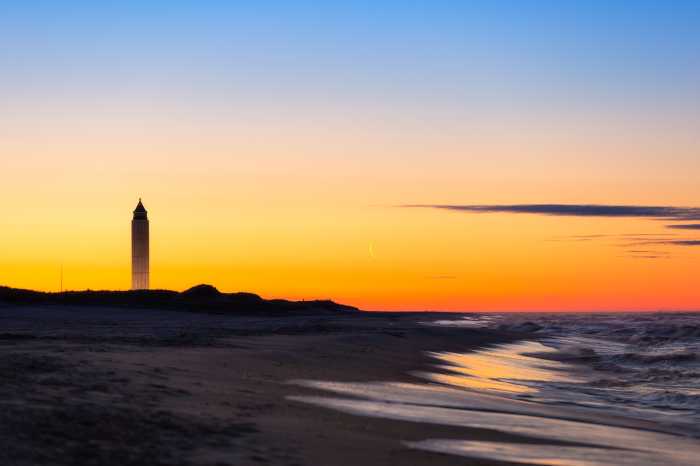
“Where will state’s nuclear waste go?” was the banner headline last month on the front page of the largest newspaper in Connecticut, the Hartford Courant. Being referred to was the waste from the two Millstone nuclear power plants.
The plants are out of sight of Fire Island but in distance, as the saying goes, the way the crow flies, they’re not far off in the event of a major accident releasing radioactive poisons: 75 miles from the center of Fire Island. The Millstone nuclear power plants are just to the west of New London, Connecticut.
But not only is there the matter, underscored by the disasters at Three Mile Island, Chernobyl and Fukushima nuclear plants, of an accident releasing the radioactive materials produced in the fissioning of uranium to generate heat to boil water to turn a turbine in a nuclear plant. There’s the issue of what’s to be done with those deadly radioactive materials – “fission products” they’re called – after they are produced,
Indeed, where will the nuclear waste from the two Millstone plants – and the nuclear waste from the other 90 nuclear power plants operating today in the United States go?
Decades ago, one scheme was to put nuclear waste on rockets to be sent to the sun. But the very big problem, it was realized, is that one-in-100 rockets undergo major malfunctions on launch, mostly by blowing up. As Forbes magazine has pointed out, because of the “possibility of launch failure” if “your payload is radioactive or hazardous and you have an explosion on launch…all of that waste will be uncontrollably distributed across Earth.”
So, that idea was scratched.
Then there’s been the plan to construct a “repository” for nuclear waste at Yucca Mountain, Nevada, 100 miles northwest of Las Vegas. It was designated the nation’s “permanent nuclear repository” in 1987 and $15 billion was spent preparing it. The very big problem concerning Yucca Mountain as a nuclear waste dump: it is riddled with 32 earthquake faults.
So, that idea was scratched, too.
Now, Finland has built a nuclear waste site for its four nuclear power plants. “Finland wants to bury nuclear waste for 100,000 years,” was the title of a CNBC piece about it and how it uses “a labyrinth of underground tunnels.” The very big problem: nuclear waste needs to be isolated from life for way more than 100,000 years. The U.S. Court of Appeals for the District of Columbia Circuit in 2004 ordered the EPA to rewrite its Yucca Mountain regulations to acknowledge a million years of hazard.
“And that’s actually a low-ball figure,” says Kevin Kamps, radioactive waste specialist for the organization Beyond Nuclear, based in Takoma Park, Maryland.
Some nuclear waste stays radioactive for millions of years, notes Kamps. “Iodine-129 that is produced in reactors has a 15.7 million-year half-life.” After a half-life, a radioactive material is half as radioactive as when it was produced. For determining a “hazardous lifetime,” a half-life is multiplied by 20. Thus Iodine-129 remains radioactive for 314 million years.
“The design of the storage facility” for nuclear waste in Finland “has taken into account the potential impact of earthquakes and even future ice ages,” related CNBC.
But not for anything close to millions of years.
So, what should be done about nuclear waste?
First, says Kamps, “we should stop making it.” He calls for the closure of every nuclear power plant in the U.S., the building of no more and a push for safe, clean, green energy sources led by solar and wind energy. Nuclear power plants in the U.S. have since 1957 generated nearly 100,000 tons of deadly nuclear waste, he says. Second, the “best option is hardened onsite storage.”
Kamps and Beyond Nuclear, with other environmental and safe-energy groups, is challenging – along with the state governments of Texas and New Mexico – the present U.S. government plan involving “so-called interim” nuclear waste sites in Texas and New Mexico. They would be amid largely Latino communities, and on top of the Ogallala Aquifer, the largest aquifer in the U.S. It extends north to South Dakota, encompassing eight states, and is a main source of water for drinking and irrigation.
Also, the U.S. Department of Energy has, he says, “restarted its federal consolidated interim storage facility scheme, last attempted in the late 1980s and early 1990s. A whole new crop of nuclear waste dump fights can be expected, especially ones targeting Native American reservations to agree to host the most deadly poison our society has ever generated.”
Also some 75 miles from the center of Fire Island, in southern New Jersey, has been the Oyster Creek nuclear power plant. It was a twin of the Shoreham nuclear power plant built on Long Island. Shoreham was shut down soon after it began operating by a groundswell of public opposition and challenges by Suffolk County and New York State. Oyster Creek, like Shoreham, was a General Electric Mark I nuclear power plant (which also was the model of five of the six GE nuclear power plants at Fukushima).




























